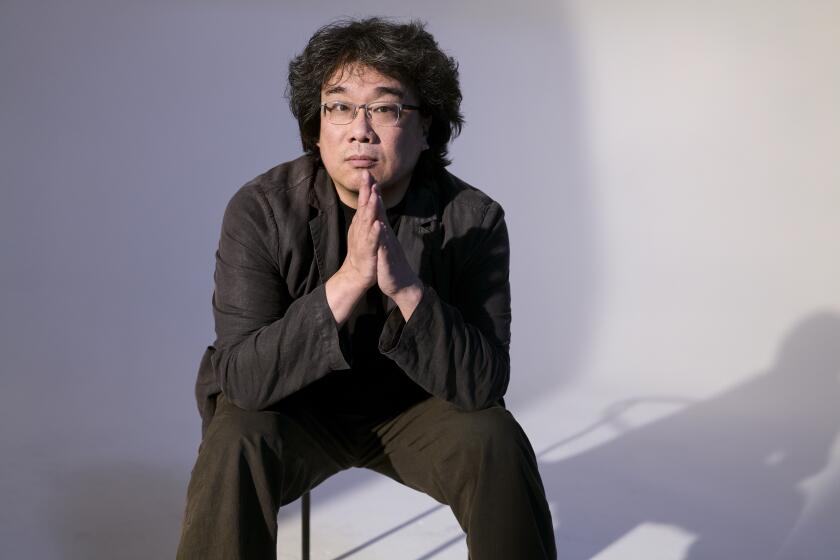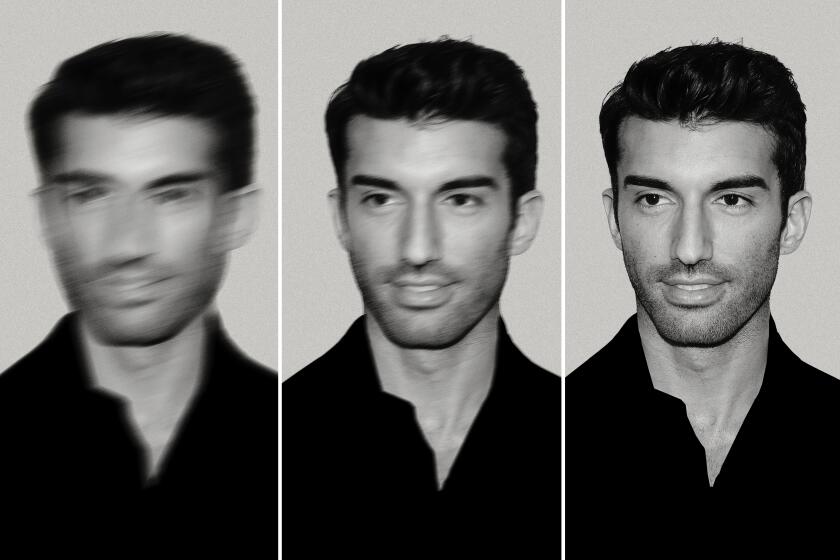A master craftsman
- Share via
TO write seriously about topics -- movies, jazz, popular fiction -- that many people regard as peripheral or totally irrelevant to their lives is among the least gratifying of occupations. That’s particularly true now, when the pendulum seems to be permanently stuck at the burbling end of the spectrum, where the bloggers -- history-free and sensibility-deprived -- weekly blurb the latest Hollywood effulgence and are rewarded by seeing their opinions bannered atop movie display ads in type sizes elsewhere reserved for the outbreak of wars and the demise of presidents.
Even in the dwindling realm where critics still attempt to make fine distinctions, there are problems, mostly of tone. For my sins, I enjoy the wise-guy riffs of Anthony Lane in the New Yorker, but I have to admit that his manner is not well-suited to the middle range, where many of the movies that are most interesting to write about uneasily reside. At the spectrum’s other end is Stanley Cavell -- the professor Irwin Corey of film studies -- who has never met a movie he cannot obfuscate with a viscous prose style that reaches ever higher levels of unintended risibility. Where, I’ve often wondered, is a critic who wears his erudition lightly, writes with an impeccable combination of verve and sobriety and, above all, makes you see (and hear) the objects of his ruminations? Is it possible to find such a critic whose medium is prose (always slow-footed in comparison, say, to a Bryan Singer movie) and topics evanescent: a perfect cut between scenes in a movie, for example, or a four-bar melodic fragment in an arrangement of Gil Evans’ song “La Nevada.”
I think I’ve finally found my man. His name is Gary Giddins, and he has, of course, long been known as a premier jazz critic (even by tin-eared me). I took to reading him on that subject purely for the pleasure of his company, long before I actually met him. (Full disclosure: We enjoy a pleasantly collegial relationship, tempered by the fact that we live at opposite ends of the continent.) He has previously written occasionally about the movies but in recent years has started regularly reviewing DVDs for the New York Sun while contemplating larger cinematic topics for other publications. These pieces are mainly about the “classics” -- a kiss-of-death word -- but they bring him into a world I know at least a little about, and they offer a vitality of insight that’s inspiring. You read Giddins and you start adding to your Netflix queue.
DVDs represent a technology that is a boon (in image quality) and a nuisance -- they are often stupidly manufactured, technically speaking, and are still too fussy to handle without damaging. But they are vital to Giddins’ critical practice, for he is a master of the rewind and pause buttons, which give him the ability to move back and forth, studying his material and making up his mind at leisure. (Actually, of course, the remote is available to all of us, but few of us have Giddins’ passionate thumb.)
The results of his devotion are immediately apparent in the first two sections of “Natural Selection” (to be published early next month), one consisting of long essays on great comedians, the other of pieces about older movies and their stars and directors. The first thing you notice is the casual comfort with which Giddins introduces lofty critical references into his considerations of humble popular culture. He smoothly eases Henri Bergson and Ralph Waldo Emerson into his superb essay on Jack Benny, for instance. But he also introduces us, via a quotation from Larry Adler, the harmonica player who toured with Benny, to a radical conception of what Benny was actually up to: Adler said the comedian “not only epitomized Jewish storytelling and intonation, but showed everyone else how to do it.” The high-low range of Giddins’ references never fails to stir me to envy and despair.
I don’t mean to imply that Giddins is more reliant on his research than he is on his own questing eye. Here he is on Charlie Chaplin: “There is a difference between sentimentality, which is almost always crass and phony, and pathos, the comedian’s acknowledgment of tragedy. Chaplin has ruined numerous comedians who wanted his tears but didn’t possess his equilibrium.... Movies always try to manipulate our emotions. We are pleased to admit that a filmmaker can make us laugh or keep us in suspense, but we are reluctant to credit one who makes us cry. Yet the latter effect requires as much precision and perhaps even more taste.”
This bold and provocative generalization is, typically, contained in a very close reading of “City Lights,” in which Giddins carefully demonstrates the balance Chaplin maintains between hilarity and a sadness that always stops short of the bathetic. He also gives this care to the DVD extras, which he holds to high standards, and this treatment is an extension of his greatest critical virtue, his patience. He will get a movie right even if it is 60 years old and probably unknown to most of his readers.
Take, for example, his piece on the nine nonhorrific horror films that Val Lewton produced at RKO during World War II. From the start, they were praised for the subtle way they suggested the unspeakable without showing it, but only Giddins has the sense to observe that “Lewton’s films, like certain books, ought to be experienced in childhoods that they can be returned to later in life, the indelible moments now cast amid subtler evocations and themes.” And he alone, of the critics I’ve read on the filmmaker, notices that these pictures reverse the genre’s previous stress on masculine issues and “are keyed to mother-daughter disorders, sisterhood crises, sexual assertion and repression, lesbianism, romance, loneliness, vulnerability and suicide.”
In other words, Lewton at least briefly feminized horror -- and it takes an awful lot of back-and-forthing with your clicker to catch that invaluable point. And that says nothing about Giddins’ shrewd references in the same piece to a Jean Rhys novel, a Richard Dix performance and the witty homage to Lewton in “The Bad and the Beautiful.” This is typical of Giddins, whether he’s doing an ironically tolerant (and manically detailed) history of lip-syncing, devastating a Norman Mailer novel or finding the value (previously unobserved by me) in Steve McQueen’s sullen silences.
Indeed, the more I read (and reread) “Natural Selection,” the more I thought of Edmund Wilson, when he was reviewing “Classics and Commercials” on a regular basis in the 1940s. A lot of the literature Wilson was obliged to evaluate was no more “important” than the movies and discs Giddins grapples with. But he took the job seriously -- people were reading this stuff, which meant that it was having some sort of possibly permanent effect on their sensibilities, which meant, in turn, that it deserved serious, historical, cross-culturally attentive criticism. The difference between the two writers is that Giddins has a wit that Wilson only rarely mobilized. Considering the “whirring vibrato” of Alanis Morissette’s “Let’s Do It” on the soundtrack album of the execrable “De-Lovely,” he finds “it recalls Alvin the Chipmunk, except that Alvin sang in tune.” Now that’s de-licious.
Does it matter in the end? Won’t a peppy blurb give us all the consumer guidance we require -- especially if we’re talking old movies and music? I think it does matter, and not only because a good critical essay -- featuring an engaging mind fully engaged with significant cultural objects in which it finds useful, surprising resonances -- is its own reward. It is also a defense against lazy nostalgia. (There is no other kind.) Most important, smart readings of Garbo’s (or Lon Chaney’s) masks or the three distinct phases of Billie Holiday’s career enrich our understanding of modern movie stardom, modern horror and modern music respectively. We see our culture more clearly because of the force, intelligence and alertness to overlooked detail that Giddins brings to his readings of a past that remains stubbornly, if sometimes only subliminally, present in our own less acute remembrances. *
More to Read
Only good movies
Get the Indie Focus newsletter, Mark Olsen's weekly guide to the world of cinema.
You may occasionally receive promotional content from the Los Angeles Times.










